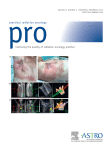- Joined
- Apr 16, 2004
- Messages
- 4,678
- Reaction score
- 5,126
Two choice quotes:
#1
Some may interpret the 2019 Match as evidence of a simple market correction to the anticipated oversupply of ROs7 and suggest that declining medical student interest in the field will result in a reduction in the absolute number of RO trainees per year via unmatched positions. We urge caution interpreting the Match results as such. Rather, we posit that the increased unmatched rate will not be accompanied by a proportional decrease in the number of graduating trainees for 2 reasons. First, the unfilled spots may be filled via the post-Match Supplemental Offer and Acceptance Program (SOAP) or other means. Second, the absolute number of available (and filled) positions continues to rise.
#2
As the barrier to entry is lowered, it is plausible that RO will become an appealing “back-up specialty” for those considering competitive specialties or will be considered by previously uncompetitive candidates. So long as the absolute number of available positions remains elevated and alternate pathways for RO entry exist (eg, SOAP), the validity of rapid, free market–based solutions to RO workforce imbalances will be tested.


